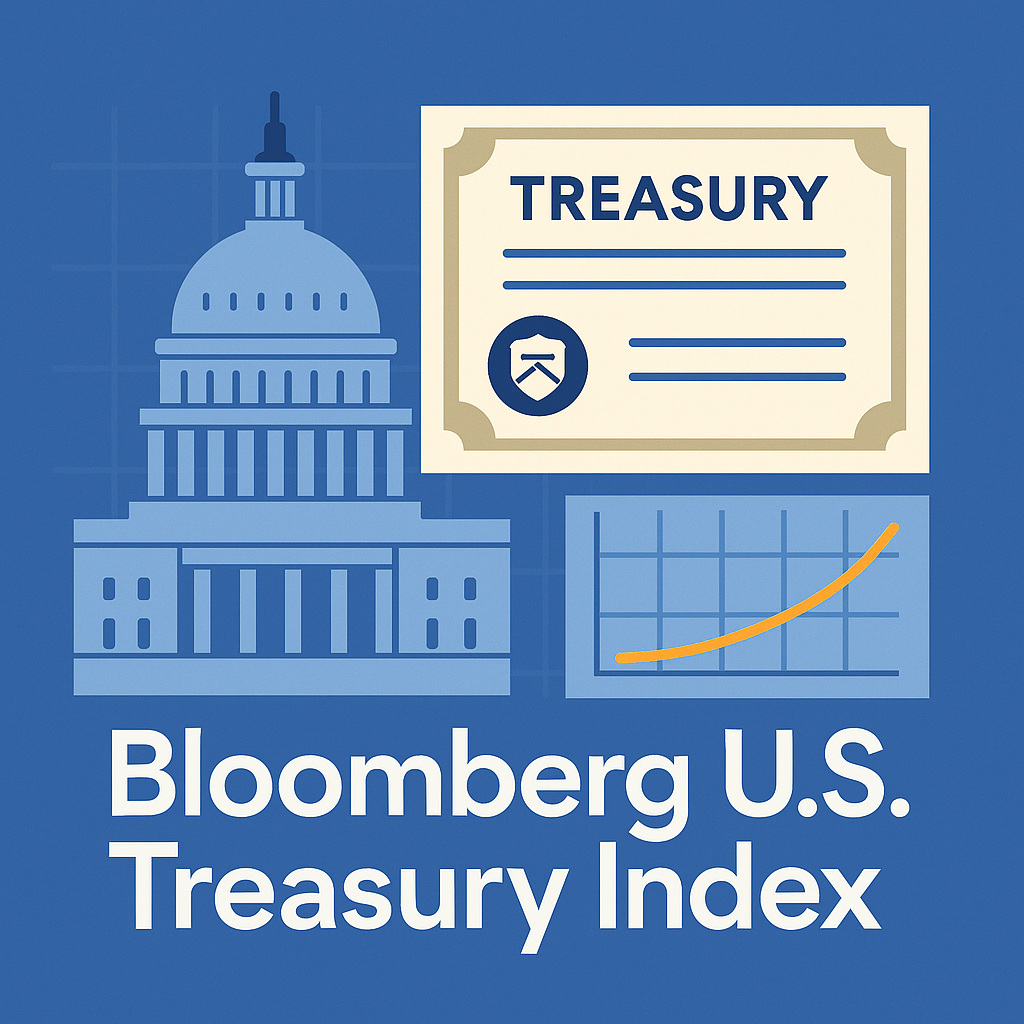Bloomberg U.S. Treasury Index track the full spectrum of publicly issued U.S. Treasury securities—bills, notes, bonds, floating-rate notes (FRNs), and Treasury Inflation-Protected Securities (TIPS) with at least one year to maturity—the index offers investors a single, market-value-weighted gauge of the entire risk-free curve. Consequently, it serves as the backbone for countless allocation and performance decisions.

1. Why It Exists
To begin with, the index provides a neutral yard-stick for a variety of use cases:
- Performance measurement. Active Treasury managers can therefore benchmark excess return against a transparent, rules-based standard.
- Asset-allocation modelling. Its duration and, equally important, its yield anchor fixed-income risk budgets.
- Macro signals. Furthermore, changes in curve shape and total return inform views on growth, inflation, and liquidity.
2. Inclusion & Rebalance Rules
| Rule | Details |
|---|---|
| Currency | USD, full faith and credit of the U.S. Treasury. |
| Seasoning | Immediately after auction month-end, new issues enter the index. |
| Remaining Maturity | At least 1 year; however, FRNs stay until they mature to < 1 year. |
| Coupon Types | Fixed-rate, TIPS, and FRNs; meanwhile, STRIPS are tracked separately. |
| Rebalance | Subsequently, market-value weights reset monthly after the last business day. |
3. Index Snapshot (April 2025)
- Market Value: ~US $25 trillion
- Issues: 326
- Duration: 6.3 years
- Yield-to-Worst: 4.32 %
- 2025 YTD Return: +1.7 %
- Weight by Term: bills 17 %, notes 46 %, bonds 25 %, FRNs 8 %, TIPS 4 %
Thus, the index balances short-dated liquidity with long-bond rate sensitivity.
4. How It’s Used
| User | Application | Transition Note |
|---|---|---|
| Fund Managers | Benchmark for core government portfolios | Above all, measures active skill |
| Central Banks | Reserve allocation and, additionally, policy-rate transmission study | |
| Derivatives Traders | Hedge instruments via futures (2-, 5-, 10-yr, bond) as well as swaps | |
| Academics & Economists | Risk-free return series dating back to 1973 | Consequently, aids long-horizon research |
5. 2025 Market Themes
- Curve Inversion. 2s/10s at –38 bp, thereby signalling late-cycle conditions.
- Heavy Supply. Treasury projects US $1.8 T net issuance; as a result, bills absorb quantitative-tightening runoff.
- Fed Policy. Two 25 bp cuts are priced for Q4 2025; accordingly, each 25 bp shift moves the index price by roughly 1.6 %.
6. Strengths & Caveats
| Strengths | Limitations |
|---|---|
| First, comprehensive coverage of the sovereign risk-free set. | Conversely, pure rate exposure offers no credit-spread pickup. |
| Second, a long history aids stress testing. | Meanwhile, duration near 6 years makes returns rate-sensitive. |
| Third, monthly rebalancing and daily pricing enhance accuracy. | However, off-the-run STRIPS and cash-management bills are excluded. |
7. Looking Forward
Looking ahead, an expanding TIPS float may lift the real-yield share to about 6 % by 2027. Moreover, the term premium could remain elevated if fiscal deficits persist, thereby keeping long yields sticky even amid Fed easing. For allocators, therefore, the index will continue to anchor USD fixed-income risk budgeting and provide a reliable pulse on the risk-free curve.